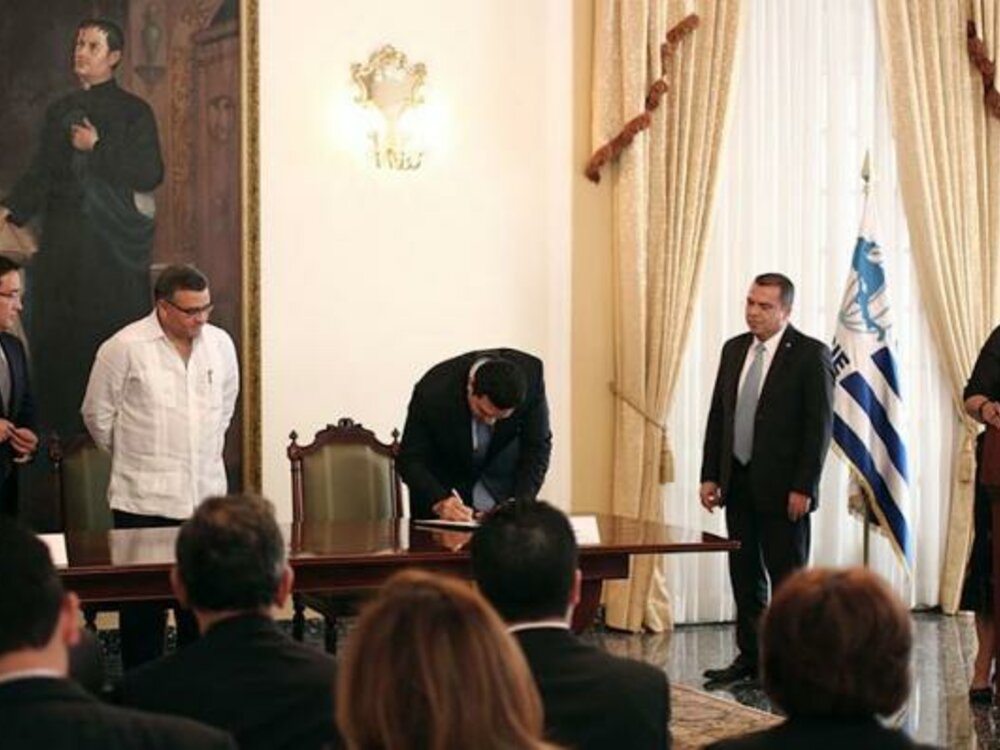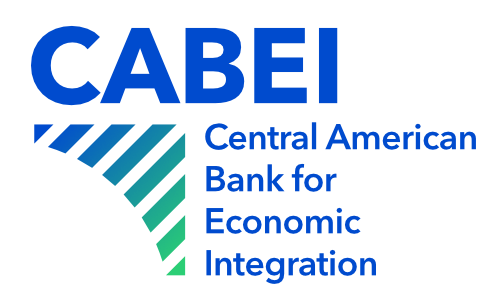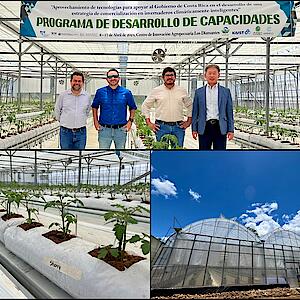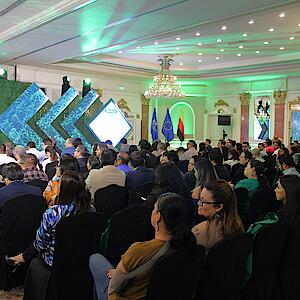CABEI contributes to El Salvador’s environmental sustainability by donating properties

The donated properties form part of one of El Salvador’s most important ecological systems.
San Salvador, October 3, 2013. - The Central American Bank for Economic Integration (CABEI) signed a property donation agreement with the government of El Salvador for the donation of two properties known as "Isla Tasajera and Punta Cordoncillo." The objective is to promote the execution of a plan for the balanced and sustainable management of the existing natural reserve in order to preserve it as part of El Salvador's natural heritage.
The event was attended by Salvadoran President, Mauricio Funes; Minister of Finance and CABEI Governor for El Salvador, Carlos Enrique Cáceres; Attorney General, Luis Antonio Martínez; Minister of Environment and Natural Resources, Herman Rosa Chávez; Minister of Tourism, José Napoleón Duarte; and CABEI Director for El Salvador, Guillermo Funes Cartagena.
The objective of the land transfer is to develop and execute a plan for the sustainable management of the existing natural reserve, as well as for the possible development of the ecotourism potential of both Isla Tasajera and Punta Cordoncillo, benefitting the social and economic development of the area, which is part of the Mesoamerican biological corridor.
The donation will allow the property to be included in the Natural Protected Area System, which is run by El Salvador's Ministry of Environment and Natural Resources. This will produce great benefits for the country in terms of environmental and natural resource management, as well as the preservation of the country's natural heritage.
According to the Ministry of Environment and Natural Resources, the acquisition of the property by the government of El Salvador is of great importance because Isla Tasajera is part of one of the most important ecological systems of El Salvador, known as the Jaltepeque Complex. This contains the country's second most important salty forest with an area of forty-nine thousand four hundred fifty-four hectares and a beneficiary population of 479,800 inhabitants.
The Jaltepeque complex also houses a large array of terrestrial and aquatic biodiversity, including endangered species and various ecosystems such as mangroves, freshwater and brackish swamps, tropical dry forest, agro-ecosystems, permanent and seasonal riparian-lagoon systems, dunes and sandy beaches.
As the region's main development financial institution and pursuant to its vision to be the strategic partner for the improvement of the quality of life of Central Americans, the Central American Bank for Economic Integration included the cross-cutting axis of Environmental Sustainability in its 2012-2014 Corporate Strategy This donation is an example of CABEI's commitment to fulfill its vision for the benefit of all Central Americans.






![[Translate to English:] [Translate to English:]](/fileadmin/_processed_/e/3/csm_WhatsApp_Image_2024-04-18_at_2.12.23_PM__2__590ef43ade.jpeg)
